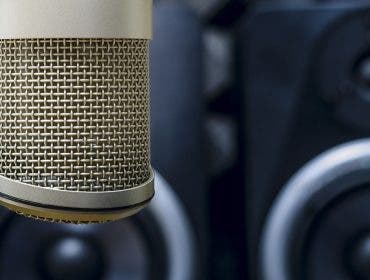Here are the two best tips I can give you about photographing cars: Use wide-angle lenses and always, always look for unconventional angles. And ya know, it doesn’t hurt to put a person in the shot if you can.
When photographing a car, one of the most important things to keep in mind is the camera angle. Most times, especially at car shows and Concours d’Elegance, there’s not a lot of room to maneuver, so you need to get close to the vehicle, which means using wide-angle lenses. You also need to simplify the photograph’s composition by eliminating the distractions visible at eye level, which is the way most people shoot cars. So try to use low or high angles, to not only provide a different perspective but to minimize background clutter. While many pros use twenty-foot stepladders, even a short, two-step kitchen step stool, will get you higher than eye level. But don’t forget low angles. The best shots may be made when you’re lying on the ground pointing your camera at odd angles up at the car.
OK, so let’s all agree that wide-angle lenses are wonderful, but what do you do when you’re shooting a digital SLR that has a “multiplication factor” of 1.5 or 1.6. All of a sudden that 28mm lens that worked so well with your film camera at the car show is a feeble 45mm on a Canon EOS 10D. What’s a poor digital car photographer to do? Shopping for cheap, used wide-angle lenses is the obvious choice but good deals have evaporated since the introduction of the Nikon D100 and Canon ESO70D as people scrambled to pick them up. You can expand possibilities with wide-angle lenses from Sigma, Tamron, or Tokina; even better yet, use adapters that let you interchange lenses from other manufacturers. One of the coolest is the Contax to Canon EOS adapter (www.bobshell.com/store/products/g-adapt01.htm) that lets me use Contax manual focus lenses on any EOS camera, such as the 10D.
Canon 10D
For this picture of my wife Mary next to a Roush Mustang, I mounted a Canon EF 14mm f/2.8L on a Canon EOS70D camera using a Shell EOS adapter. Lens was focused manually and used in aperture priority exposure mode with a minus 2/3rds exposure compensation that was determined by looking at test shots on the 70D’s LCD preview screen.
Canon EF 14mm f/2.8L
Another alterative is to use an inexpensive wide-angle adapter. Sure the image quality of a $40 adapter isn’t going to match the quality of an expensive wide-angle lens, but it lets you make images right now. When used with wide-angle zooms, auxiliary lenses, such as Adorama’s Pro-Optic Semi-Fisheye lens adapter, can vary the overall effect from an almost circular image to a full-frame fish-eye look. Sure, there’s gonna be some softness and color fringing at the edges but experiment with various apertures to minimize these imperfections or, better yet, make it part of the composition. Personally I don’t worry about optical flaws, I just wanna have fun.
My favorite lens for photographing cars is the inexpensive Canon EF 14mm lens, but the 70D turns it into a 35-88mm. Since that isn’t wide enough for the kind of images that I want to make, I attached Adorama’s Pro-Optic Semi-Fisheye lens adapter onto the front of the lens giving this Porsche Speedster replica an up close and personal look.
Don’t worry about being a fashion plate and it’s OK to wear your grungies when photographing cars. While at a charity Concours d’Elegance I spotted this classic Ford, and really liked the combination of blue sky and blue car. The best way to simplify the busy background (there were another hundred are so cars behind this one) was to lie on the grass and point the camera up toward the sky. A Canon EOS 70D with EF 14mm lens and indispensable Adorama Pro-Optic Semi-Fisheye lens was used. Here the color fringing and softness add to the overall effect. © Joe Farace
Joe Farace is the author of “Plug-in Smart” and 22 other books. If you enjoy automobiles, be sure to visit www.joefaraceshootscars.com as well as www.joefarace.com.
© Adorama Camera, Inc.

